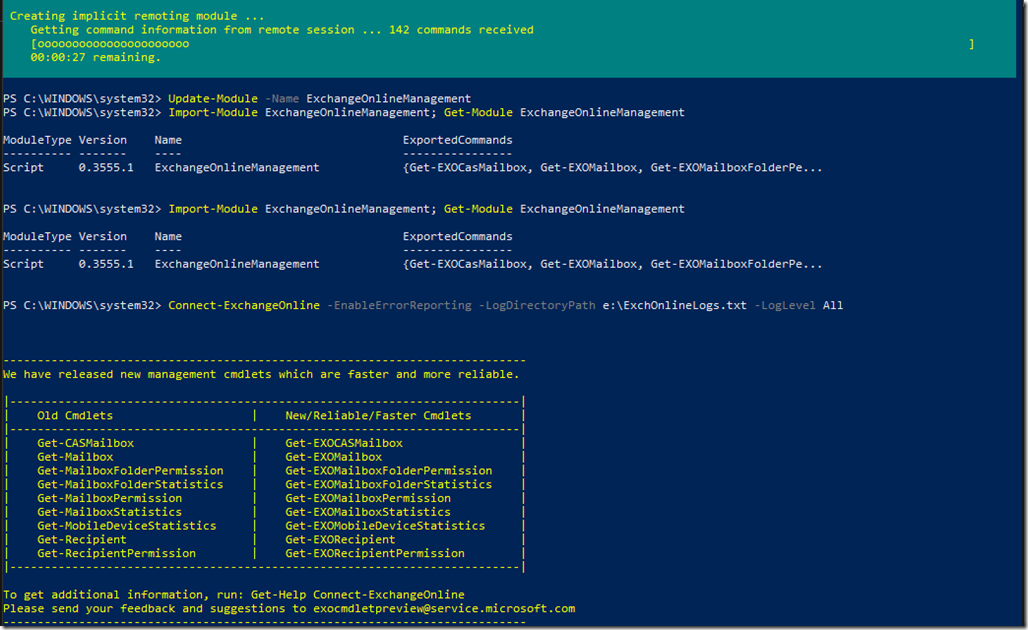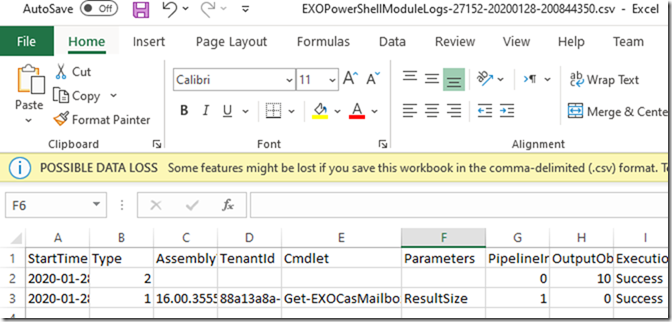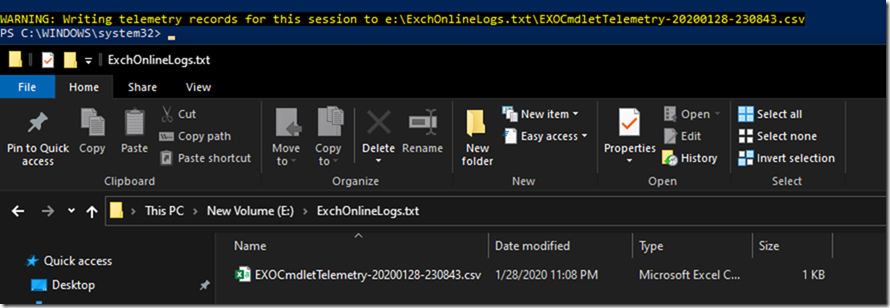Managing Exchange Online
If you have Exchange Online and your users are MFA enabled then you most likely will be using Exchange Online’ s ECP (Exchange Control Panel or Admin Center) to connect to Exchange Online PowerShell through the Hybrid Windows since this is the only supported way with MFA.
Clicking on Configure would install the PowerShell Module of Exchange Online which looks like the below screenshot.
New PowerShell with MFA support
If you have launched Exchange Online PowerShell today then you most likely have noticed there’s a red line stating the possibility to try the new (Preview Version) of Exchange PowerShell V2 .
Microsoft has recently released a new version of Exchange Online PowerShell Module which supports MFA and can be run directly from your computer without the need to login to Exchange Online Admin Center and download any files from there. Check details in this link
As stated in the article, the Module is just in preview so it has some known and maybe unknown bugs as well.
How to Install it?
The installation process is pretty straightforward, Launch Windows PowerShel as an Administrator (It’s required for the installation).
Run these 4 cmdlets
Set-ExecutionPolicy RemoteSigned Install-Module PowershellGet –Force Update-Module PowershellGet Install-Module -Name ExchangeOnlineManagement
You might get a warning that the Module you’re about to install is from an Untrusted Repository, Accept it by typing Y and hit enter
Type the following cmdlet to ensure that Exchange Online Management module is installed
Import-Module ExchangeOnlineManagement; Get-Module ExchangeOnlineManagement
Connecting to Exchange Online
To connect to Exchange Online, Run the following cmdlet along with the new parameter –EnableErrorReporting which gives the ability to record all the cmdlets that you have run along with errors generated as well.
Connect-ExchangeOnline -EnableErrorReporting -LogDirectoryPath e:\ExchOnlineLogs.txt -LogLevel All
After connecting, I am going to try and run two commands the Old Cmdlets and New Cmdlet and see the difference between them:
Get-CASMailbox -ResultSize 10 Get-EXOCasMailbox -ResultSize 10
The new Cmdlet has much more details, although it says that it runs faster but it took few seconds more than the old one to run (Probably first time).
After you run those two Cmdlets, There will be two files generated in the log directory which we have pointed the parameter to save files to.
The CSV files have details about the two cmdlets and the HTTP Method they are utilizing in order to connect along the Request and response latency.
This new version seems to be extremely useful esp in environments where such deep details are needed for troubleshooting issues.
Stay tuned for more









